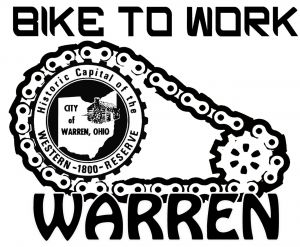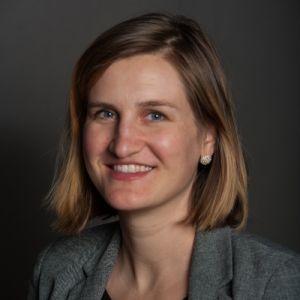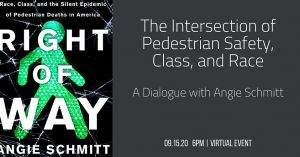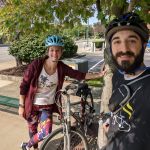Active Transportation Goes Off Road and Online
HCP-MV Partners Find New Avenues to Engage Residents in Active Transportation Activities
September is always a month of transitions. Summer’s bright lemon-yellows darken to become the well-known mature golden, mustard hues of autumn. Planting season becomes harvest season, a time to enjoy the fruits—and veggies— of our labors. Days grow shorter, shadows longer, mornings crisper, and evenings chiller. Perfect for a walk, hike, or ride.
The COVID-19 pandemic has resulted in many significant disruptions to our routines. Many of those disruptions have brought about additional challenges to our health and wellbeing. However, there has also been a significant uptick in people opting outside—to walk, to hike, to bike—to respond to these additional challenges to our health and wellbeing.
Eric Weiner states in “Why Walking Is the Ideal Pandemic Activity” that “Walking is about more than walking, and always has been. Walking soothes. Walking inspires and sharpens the mind.” And several articles were written celebrating the increased interest in bicycling while warning new bicyclists to brace themselves that it might be a little bit of a wait before they could jump on their bikes and ride.
However, as with everything else related to the pandemic, not everyone has the same level of access or ability to walk, hike, or bike safely in their communities. Though this study cited by Frederik Kunkle in “‘Walking While Black’ Can Be Dangerous, Too,” is now five years old, the truth still stings:
[A] small but provocative study — conducted by researchers at Portland State University in Oregon and the University of Arizona — suggests that biases just outside people’s conscious awareness can make them less likely to yield to minority pedestrians. And that could put those pedestrians at risk, said Kimberly B. Kahn, an assistant professor of social psychology at Portland State University.
[This] study suggests motorists are less likely to stop for an African American pedestrian in a crosswalk. A black pedestrian’s wait time at the curb was about 32 percent longer than a white person’s. Black pedestrians were about twice as likely as white pedestrians to be passed by multiple vehicles.
Though not without their challenges, members of Healthy Community Partnership have been re-energized by these national conversations that reinforce our mission and purpose to improve health, wellbeing, and health equity in our communities. And, that we can do so, by focusing our collective efforts to improve conditions to make outdoor physical activity and active transportation more welcoming and accessible. This commitment to our mission and our community is why rather than walk away from some of the events HCP members had planned for this year, they instead chose to adapt and keep rolling along.
For nine years, Bike to Work Warren has celebrated Bike to Work Day with an early-spring early-morning ride to downtown Warren. This year, the pandemic predictably required the event organizers to re-imagine the event. Rather than cancel, Bike to Work Day was transformed to become an early-fall all-day virtual event. There was even some participation from neighboring communities in the region.

2020 Bike to Work Warren Participation Prizes
From coverage in the Tribune Chronicle:
Kris Kriebel, health educator and Creating Healthy Communities coordinator with the Trumbull County Combined Health District, said participants can tag the Bike to Work Warren Facebook or Instagram page with a picture of themselves and their bike, or check in to the event with a picture of them and their bike.
If participants do not use social media, they may email a picture of themselves to hekriebe@co.trumbull.oh.us during the event Sept. 22.
Prizes for this year’s event are a Bike to Work T-shirt and a $15 Panera gift card.
Hopefully, the addition of this virtual participation option will stick with the event as another strategy to encourage new riders around Warren, Trumbull County, and the Mahoning Valley to choose to go by bike.
Since the Healthy Community Partnership was officially launched in 2018, each summer HCP has collaborated with Eastgate Regional Council of Governments to bring Ohio Department of Transportation Local Technical Assistance Program’s Active Transportation Academy courses to the Mahoning Valley. Unfortunately, this year we were unable to provide these educational opportunities in the format that we had been used to. However, HCP members identified an incredible opportunity to create a community conversation about pedestrian safety, equity, and action by taking the discussion online.
Angie Schmitt, a well-known transportation planner, writer, and journalist who proudly mentions her Valley connections having once worked for The Vindicator, and the popular transportation planning website Streetsblog, participated in a a free evening webinar about her new book, Right of Way: Race, Class and the Silent Crisis of Pedestrian Deaths in America. HCP members were thrilled that she was able to participate in this event having just recently presented similar material to national audiences in partnership with AmericaWalks and Next City. Schmitt also recently spoke with WYSU’s Tim Francisco and was featured in an interview by her former employer, Streetsblog, where she outlined her inspiration for writing the book: “It Was an Injustice That There Wasn’t More Attention’ to Pedestrian Deaths.”
The virtual event, “The Intersection of Pedestrian Safety, Class and Race: A dialogue with Angie Schmitt,” organized by HCP and Eastgate was held on September 15 and drew approximately 40 participants for an informative, interactive, and inspirational discussion. During the question and answer exchange, Schmitt encouraged participants to seek out solutions like organizing neighborhood walk audits, advocating for improved lighting, and implementing inexpensive safe street demonstrations (also known as tactical urbanism) at well-known pedestrian safety hotspots.
Event moderator and Tribune Chronicle journalist, Renee Fox, interviewed Schmitt in connection to the event where she offered these kernels of encouragement when the path towards progress seems uphill, both ways:
Although some cities are starting to rethink pedestrian safety, many cities and towns are more worried about accommodating cars and ensuring they can travel as fast as possible, she said.
“Everything else is sort of an afterthought,” [Schmitt] said.
However, success stories have been apparent in recent years, Schmitt said, noting “there is more emphasis than there used to be in some places.”
It is the sincere hope of HCP that events like Bike to Work Warren and conversations with active transportation experts like Angie Schmitt will put us one step closer towards becoming one of those places where pedestrians and people are always accommodated and not afterthoughts.
- Jenna Amerine, Kris Kribel, and Denise RIsing participated in Bike to Work Warren 2020
- Sarah Lowry and Justin Mondok participated in to Work Warren 2020—in solidarity from Youngstown
- Complete Streets Policy Workshop Summer 2019
- Advocating for Active Transportation Workshop Summer 2019







